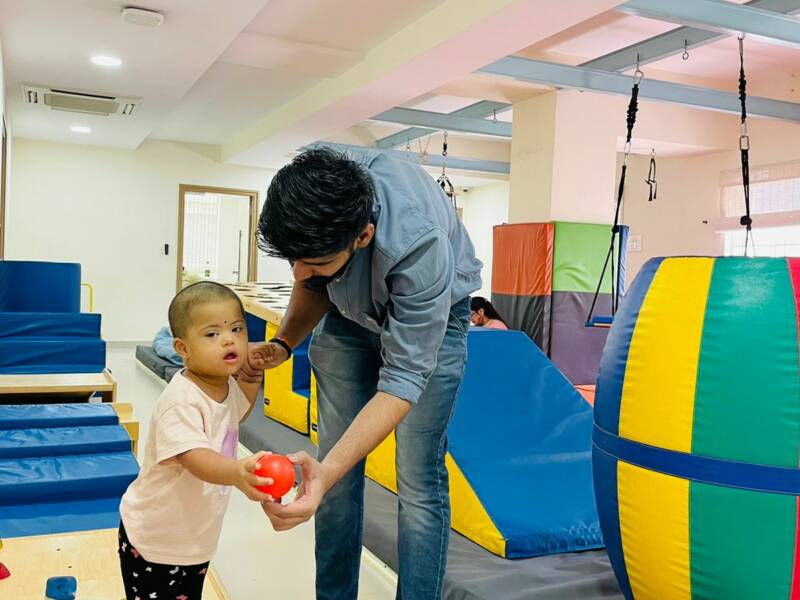Autism Spectrum Disorder
What is nonverbal autism? What causes it?
Children with autism spectrum disorder (ASD) who have not verbalized by the age of four are classified as having non-verbal autism. What does non-verbal autism mean? Nonverbal autism means your child may not speak at all or may speak very little. The non-verbal form of autism causes speech and communication-related deficits. Children with this disorder struggle to develop speech skills, and may have difficulty using any known language.
Interestingly, ASD and Non-Verbal Autism are nearly identical in their causes. Parental age, toxic exposure, genetic mutations, prematurity, chemical & metabolic imbalances are among the common causes.

How can I control the anger of my child? (How can I control Autism child’s anger?)
When it comes to controlling anger, children with autism can find it difficult. However, you can teach them how to deal with their anger with patience and understanding. Here’s what you need to know about the typical anger issues that children with autism have and how you can help them overcome this.
- Makesure you understand where your child’s anger originates, especially what are the triggers.
- Ensureyour child has a safe place to express anger.
- Establish a calm place in your home for your child where they can calm down and relax.
- Offer your child an alternative when they can’t get what they want.
- Don’t silence your child if they get physical with you, but instead talk to him or her about the consequences.
- Tension can sometimes be eased through physical activity.
- Playing with fidget toys can relieve stress and anxiety.
Being able to help your child cope with anger in stressful situations is never easy. Seeking help and advice from experts who care is sometimes the best thing you can do.

Is my child suffering from Autism? (How can I identify Autism problem in my child?)
Here are ten signs that may be indicative of autism in your child that you need to watch for.
Here are five early warning signs to watch for:
- Neither babbling nor pointing (by the age of one)
- By the age of 16 months, no single words, and by the age of two, no phrases of two words.
- Insufficient eye contact
- Tendency to line up or organize toys/objects excessively
- Hardly any smiling
Here are five later warning signs to watch for:
- It is hard to make new friends
- They speak using repetitive language or an unusual manner.
- A strong or precisely focused interest
- Social or imaginative play is hampered (or completely absent).
- Being rigid in regard to specific routines or rituals.

By the age of two or three years old, the symptoms of autism spectrum disorder are usually well-understood. Between the ages of two and five, a wide range of behaviours can be observed.
Symptoms of autism in young children include:
- Avoiding eye contact and not answering to their name
- When you smile at them, they don’t smile back
- If they don’t like a certain flavour, smell, or sound, they get irritated
- Make repetitive actions like flapping their hands, flicking their fingers, or rocking their bodies
- They don’t talk as much as other children and repeat the same sentences.
Symptoms of autism in older children include:
- Having difficulty understanding what other people think or feel
- Unable to express how they feel
- liking a highly structured routine and getting very upset when it is altered
- An intense interest in a particular subject or activity
- Getting upset if they are asked to do certain things
- Preferring to do things on their own
- Having trouble making friends
- They may take things too literally – for instance, they may not understand the term “break a leg”
Autism in girls and boys:
Autism can manifest differently in girls and boys. Autism can manifest in girls as quieter behavior, hiding their feelings, and appearing more comfortable in social situations. Whereas, in boys behaviours like hyperactivity and poor social skills may seem very prominent. Because of this, it can be difficult to autism detect in girls.
Autism in adults:
Those with autism spectrum disorder can live with it for a life time, and sometimes they are not diagnosed until they are adults. This may be because their symptoms are less severe because they fall into the higher functioning range of autism, or because they were mistakenly diagnosed with a condition such as attention deficit hyperactivity disorder or obsessive compulsive disorder. People with autism are affected on a spectrum, so they will experience daily life differently.
How to reduce hyperactivity in children with autism? (How to reduce hyperactivity in autism child?)

- Provide them with a well-balanced and healthy diet. Make it a priority.
- Teaching deep breathing, yoga, and meditation will be beneficial.
- Take them for a walk.
- Make a box of activities based on your child’s interests and keep it handy for when they is bored.
- Ensure that your days, including weekends and vacations, are structured. Your child will perform well when they know what to expect.
- Use soothing music to calm them down.
- Make a quiet and peaceful corner or space in your home for your child to go to during “quiet time.” It will keep them busy and quiet.
- Getting your child to exercise for at least 20 minutes a day can result to alleviate hyperactivity throughout the day.
- Give your child fidget alternatives. He or may be able to sit still for extended periods of time with some manipulable objects.
- And lastly, your child reacts to your reaction. Their hyperactivity levels may increase if you become agitated, disappointed, or furious. So stay calm yourself.
How to deal with autism tantrums?
A tantrum typically occurs when a child is denied what they want to have or wants to do. Tantrums are more common among toddlers and preschoolers as they lack precise skills in any one area to go through difficulties on their own. To handle temper tantrums adequately two things you need tounderstand.
- Recognize the reason or trigger behind the tantrum. You’ll be able to respond more appropriately once you figure out why your child is throwing a temper tantrum.
- Reinforce positive behaviour. Recognize when your child is engaging in appropriate behaviour and reinforce his or her for that. This will motivate your child to respond positively in future.
How to address temper tantrums? When you are dealing with it, check out the following tips to clam your child down.
- Consider ignoring the situation.
- Deal with aggressive behaviour right away.
- Try not to yell at your child.
- Let your child be angry. Sometimes, they might need to get the anger out.
- Use brief and simple instructions.
- When needed, use distractions.
